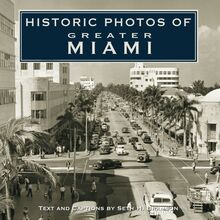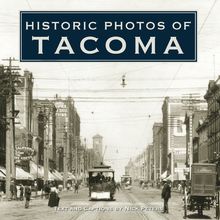Historic Photos of Puget Sound , livre ebook
167
pages
English
Ebooks
2009
Vous pourrez modifier la taille du texte de cet ouvrage
Obtenez un accès à la bibliothèque pour le consulter en ligne En savoir plus
Découvre YouScribe en t'inscrivant gratuitement
Découvre YouScribe en t'inscrivant gratuitement
167
pages
English
Ebooks
2009
Vous pourrez modifier la taille du texte de cet ouvrage
Obtenez un accès à la bibliothèque pour le consulter en ligne En savoir plus
Publié par
Date de parution
01 octobre 2009
Nombre de lectures
1
EAN13
9781618584236
Langue
English
Poids de l'ouvrage
4 Mo
In many ways, Puget Sound looks today as it did in the eighteenth century, when its first explorers probed into the bays and inlets. The Olympics flank the west and the Cascades rise to the east with Mount Rainier looming to the south. The deep, cold water still laps against the shore, but many of the beaches have yielded to homes and industries. Instead of the dense forests, great cities, homes to millions, stretch far back from the shore. Hundreds of salmon swim up the Sound into rivers that once saw fish in the tens of millions.
Beginning a decade or two after the first American settlements, photographers captured scenes of Puget Sound’s people, ships, and communities, kept alive in archives and history books. Teeming with other photographs up to the 1970s, these striking black-and-white images in Historic Photos of Puget Sound explore life of this unique Washington region for its residents, visitors, and admirers to enjoy even now.
Publié par
Date de parution
01 octobre 2009
Nombre de lectures
1
EAN13
9781618584236
Langue
English
Poids de l'ouvrage
4 Mo
HISTORIC PHOTOS OF
PUGET SOUND
T EXT AND C APTIONS BY D AVID W ILMA
Peter Kirk, a steel mill owner from Workington, England, picked this spot on the eastern shore of Lake Washington for his new mill. In 1888, he and local investors founded the Moss Bay Iron and Steel Works, and he predicted the area would become a Pittsburgh of the West. Kirk platted the town of Kirkland with English street names. In this 1889 view, the Bank Building housing Kirk s company stands at the corner of Market and Waverly streets.
HISTORIC PHOTOS OF
PUGET SOUND
Turner Publishing Company
200 4th Avenue North Suite 950
Nashville, Tennessee 37219
(615) 255-2665
www.turnerpublishing.com
Historic Photos of Puget Sound
Copyright 2009 Turner Publishing Company
All rights reserved.
This book or any part thereof may not be reproduced or transmitted in any form or by any means, electronic or mechanical, including photocopying, recording, or by any information storage and retrieval system, without permission in writing from the publisher.
Library of Congress Control Number: 2009922630
ISBN: 978-1-59652-544-3
Printed in China
09 10 11 12 13 14 15 16-0 9 8 7 6 5 4 3 2 1
C ONTENTS
A CKNOWLEDGMENTS
P REFACE
F OUNDATIONS (1850-1885)
P UGET S OUND AND THE W ORLD (1886-1910)
I NDUSTRY F INDS A H OME (1911-1939)
P ROSPERITY AND C HANGE (1940-1979)
N OTES ON THE P HOTOGRAPHS
Seattle in the 1880s looks south from Pike Street and Second Avenue. At right several ships wait at Yesler s Wharf, while two are docked at the Columbia and Puget Sound Railway coal wharf at the foot of Jackson Street. The railroad trestle curves in from the south across the tide flats.
A CKNOWLEDGMENTS
This volume, Historic Photos of Puget Sound , is the result of the cooperation and efforts of many individuals, organizations, and corporations. It is with great thanks that we acknowledge the valuable contribution of the following for their generous support:
Everett Public Library
Olympia Historical Society
Seattle Municipal Archives
South Whidbey Historical Society
University of Washington Libraries
www.HistoryLink.org
We would also like to thank Lorraine Howell for her valuable contributions and assistance in making this work possible.
--------
With the exception of touching up imperfections that have accrued with the passage of time and cropping where necessary, no changes have been made. The focus and clarity of many images is limited by the technology and the ability of the photographer at the time they were taken.
P REFACE
Whether stepping off a jetliner or setting foot ashore from a schooner, newcomers to Puget Sound invariably marvel at the scenic wonder of land and mountains crowding around blue water. The legendary rain-actually less than New York City receives-scrubs the air and feeds clear, swift rivers. The mountains-the Olympics to the west, the Cascades to the east, Mount Rainier to the south, and Mount Baker to the north-frame a seemingly endless system of bays and inlets.
More than 15,000 years ago, advancing and retreating glaciers two-thirds of a mile thick left deep gashes in the earth. Rising sea levels filled these channels with salt water, and snowmelt and rain carved river systems.
As the vast glaciers melted for the last time, people and animals moved in. The Native Americans who made homes along the shore called the water Wulch , or Whulge , meaning salt. Salt provided them with nutritious lives in the form of abundant runs of salmon and basketsful of oysters. The bays, inlets, and river mouths allowed free communication by canoe between the hundreds of permanent settlements. Peoples from the Nisqually in the south to the Skagit and the Lummi in the north spoke a common language. They frequently intermarried, contributing to peace among those who lived beside the Salt. Only canoe raiders from the north and enemies from across the mountains to the east threatened them.
In April 1792, George Vancouver, on behalf of the King of England, explored the coast of North America aboard HMS Discovery . Vancouver named the waters off the Strait of Juan de Fuca after Lieutenant Peter Puget, a member of his expedition. Fur traders from the Hudson s Bay Company established a settlement at the mouth of the Nisqually River in 1833. Fifteen years later, settlers from the United States staked claims to Olympia, and settlement grew in the 1850s around lumber mills. Some of these communities were orderly company towns like Port Blakely or less organized responses like Seattle.
In the 1850s, the first photographers began capturing scenes of life on Puget Sound. They positioned their heavy cameras with glass plate negatives on whatever stable platform they could find, frequently a wharf or pier. The images celebrated the pride of Puget Sound, its ships, homes, businesses, and industries. Since social, commercial, and political activity depended on the water, many early shots include Puget Sound s canoes, launches, fishing boats, steamers, sailing ships, and massive warships.
Just as it did for the Native Americans, Puget Sound provided the highway that linked the region s communities with each other and with the world. At first, Indian canoes and New England schooners moved people and goods up and down the Sound until steamers of the Mosquito Fleet took over. All attention and activity focused on wharves from Olympia to Bellingham, where side-wheelers and stern-wheelers called regularly to deliver news, mail, and travelers. Residents of remote mill towns and farming communities visited big cities for both business and fun in the company of friends and neighbors. City dwellers found restful resorts and quiet picnics as close as a stroll up a Mosquito Fleet gangplank.
Even at the beginning of the twenty-first century, when some have proposed that Puget Sound be expanded into British Columbia and called the Salish Sea, the Sound is the center of attention-not for how it can be used, but how it can be protected. As the once-abundant salmon runs have dwindled from a commercial mainstay to a tourist attraction, residents realized that they need to change the role of the Sound in order to keep it. All that remains of canneries are broken rows of pilings. The fishing fleets no longer pull their bounty within sight of home, but have to sail a thousand miles to Alaska to stay in business. The Mosquito Fleet has been replaced by highways, bridges, and a ferry system that caters to the automobile. However, the natural scenery remains appealing today to residents, visitors, and admirers alike.
The following images in Historic Photos of Puget Sound preserve Puget Sound as its residents once knew it.
- David Wilma
While State of Washington gets up steam at a Tacoma dock, the stern-wheeler Queen cruises by. A smaller local steamer heads out, too, probably for Olympia or Steilacoom up the Sound. Even though the State of Washington was equipped with steam engines, her designers did not intend to waste the wind. Thus, they equipped her with a mast and sails to save on fuel.
F OUNDATIONS
(1850-1885)
In the middle of the nineteenth century, the dense forests of Puget Sound country stood as obstacles to the agriculture that composed much of the U.S. economy. Hemlock, spruce, and cedar grew to the water s edge and ultimately peaked at 200 feet high and 300 years old. Light rarely reached the fern-covered forest floor. The first settlers quickly learned that they could earn cash by felling the giants and shipping them to California, where San Francisco and its frequent fires presented a steady market. When prospectors found coal in the region, entrepreneurs built the first railroads and shipped fuel to heat and power the West Coast and even the Hawaiian Islands.
Like the Native Americans, the settlers followed the shores of the Sound and its rivers to establish their farms, mills, trading posts, and communities. Ox teams skidded the massive logs out of the forests and rolled them into the water to transport to mills.
The early industrialists built lumber mills, which anchored the first villages and towns. Workers loaded immense square-cut timbers into three- and four-masted barks and barkentines. The plentiful and high-quality spruce and hemlock spawned a ship-building industry that exceeded San Francisco s in production. Mill towns such as Port Blakely, Port Gamble, Utsalady, and Port Ludlow grew into self-contained communities.
The loggers left behind stump ranches where families built a few farms. Without any meaningful system of roads, Puget Sound residents remained tied to the rest of the region by water. The first settlers reached town by Indian canoe and later by schooner and steamer.
The area s Native Americans who ceded their lands to the United States could find little employment on their small reservations, so they took work in logging camps and in mills. The soil and climate of the region proved ideal for hops, and whole families earned wages as seasonal agricultural workers. They followed the crops by canoe and camped all summer, much as they did before Europeans arrived in the 1700s and 1800s. Many tribal members continued to catch salmon in the rivers and gather shellfish along the largely unoccupied shorelines.
Originally called Cadyville, Snohomish began in the 1850s as a busy river port 12 miles up the Snohomish River from Port Gardiner Bay. From 1861, it served as the seat of Snohomish County until upstart Everett took the honor 36 years later. In this photo dated around 1874, citizens gather at the Snohomish Exchange Hotel to celebrate the Fourth of July.
In the mid-1850s, the early settlers of Fidalgo fled the Indian troubles of north Puget Sound. In 1860, William Munks joined the few returnees and staked a claim. In 1870, he opened this store at his wharf on Fidalgo. Munks became postmaster as well as a real estate investor and a prosperous breeder of Percheron horses.
In 1880, Port Madison residences in Kitsap C














